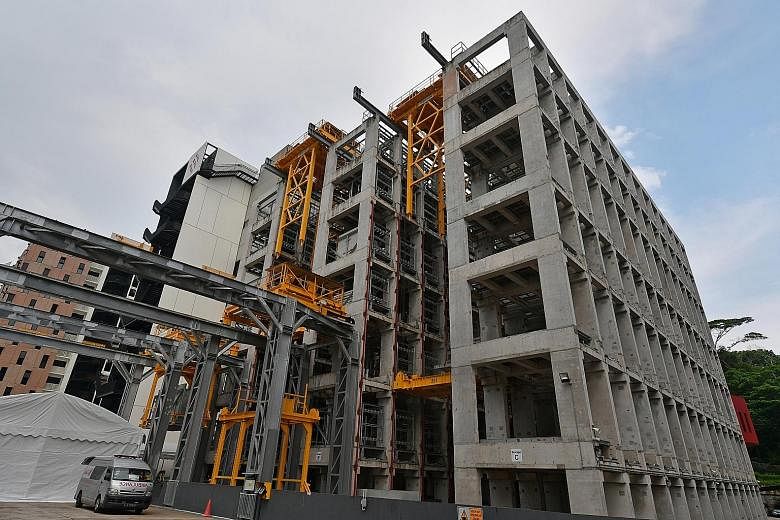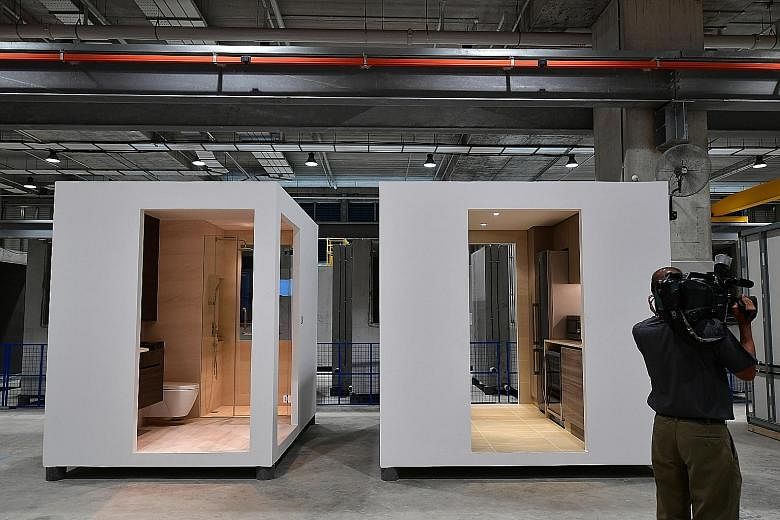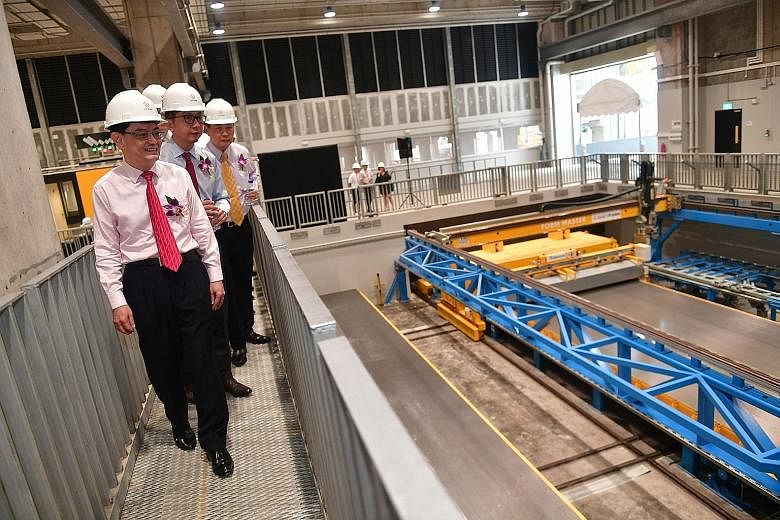Construction firms will now be told in advance about upcoming public projects that require higher levels of prefabrication, so they can make plans on whether to take them up.
This would give them the "runway to plan ahead how best to deploy resources", said Finance Minister Heng Swee Keat, at the opening of an integrated construction and prefabrication hub, Greyform Building, yesterday.
The move will be an improvement over the Building and Construction Authority's current forecast of overall construction demand at the start of the year. For example, firms were told that there will be $28 billion to $35 billion worth of public projects this year.
But the new forecast will give the types of technology required and value of public projects requiring Design for Manufacturing and Assembly (DfMA) principles. This means using technology like that for making prefabricated bathroom units.
Mr Heng, who chairs the Committee on the Future Economy to support productivity-led growth, said about 60 such DfMA projects are in the pipeline from now until the end of next year. This is in contrast to fewer than 10 such projects four years ago, he added.
"The growing number of firms investing in DfMA technologies will have these opportunities to look forward to. Other companies can also know where the opportunities lie and make more informed investment decisions," he said.
The announcement is the latest aimed at productivity in the construction industry, long known to be a laggard here.
Last week, the Government announced it will more strongly emphasise quality over price in its tender process. Last month, the Housing Board said a third of its new flats will be built in their entirety off-site from 2019 onwards, to ensure better quality and manpower savings.
Mr Heng added that the Construction Industry Transformation Map, to be launched later this month, will bring together "an integrated, targeted suite of initiatives... to raise the productivity and competitiveness of the sector".
Integrated construction and prefabrication hubs are one way to do so, said Mr Heng, since they optimise land use, require less time and fewer workers to build, and improve the quality of components.
The Government has planned for 10 such hubs by 2020. The Greyform Building, a sprawling 20,000 sq m development in Kaki Bukit, is the second built on land tendered by the authorities, and the third such hub in total. The tender process for the fifth hub built on government-issued land is ongoing.
Greyform's assistant general manager, Mr Ryan Lim, said the hub has only 60 workers - compared to three or four times more needed in a traditional open yard - and can produce the equivalent of 48 four-room Housing Board flats in about 10 days, which is half the usual time.
Straits Construction Group chief executive Wong Chee Herng said of the firm's hefty $150 million investment into the hub: "With an investment this size, our commitment to improving productivity is... serious."
But the "entire construction system must change" to include all parties from developers to engineers to suppliers to "fully realise the potential of DfMA", he added.




